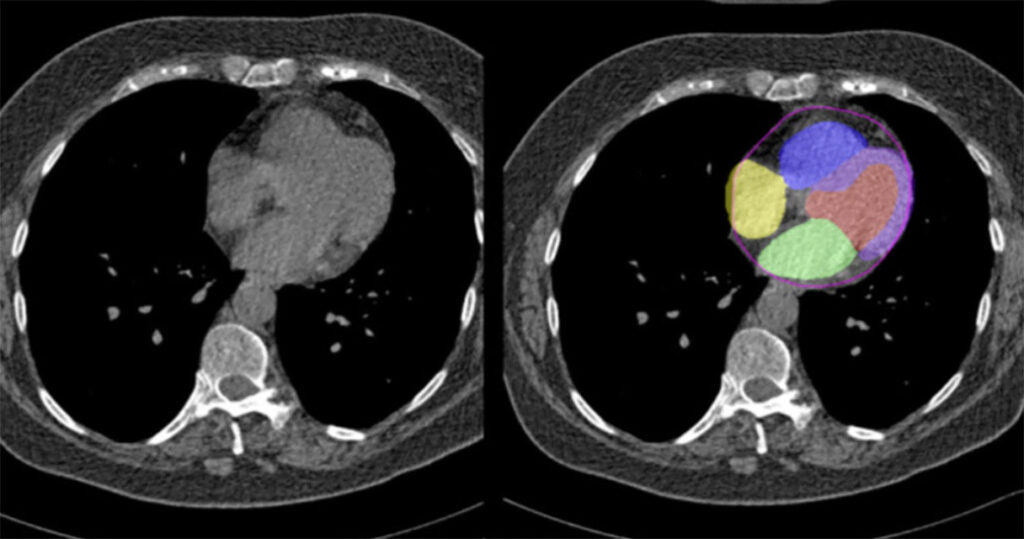
What You Should Know:
– Researchers at Cedars-Sinai have developed a new method using artificial intelligence (AI) to assess cardiovascular disease risk during a routine chest computed tomography (CT) scan without contrast dye.
– The recent study published in Nature Communications, could significantly reduce the cost and invasiveness of identifying patients at risk for heart disease.
Leveraging Existing Data for Better Risk Assessment
Traditionally, CT scans with contrast dye are used to evaluate cardiovascular risk. However, this method can be expensive and carries additional health risks for some patients. The Cedars-Sinai study demonstrates that AI can effectively analyze data from regular CT scans, specifically focusing on coronary calcium levels and heart chamber and muscle measurements, to determine potential heart problems.
The study involved analyzing data from nearly 30,000 patient imaging records. The AI models developed by the Cedars-Sinai team were able to identify these factors as more accurate indicators of cardiac risk compared to traditional methods relying on radiologists’ visual assessment of abnormalities.
Benefits and Potential of AI-powered Risk Assessment
Sumeet Chugh, MD, Director of the Division of Artificial Intelligence in Medicine at Cedars-Sinai, who was not involved in the study, emphasizes the potential of this technology. By leveraging existing CT scan data, AI can be used for large-scale screening to proactively identify individuals at risk for heart disease.
“Coronary artery disease is the leading cause of disability and death at a global level,” said Chugh, associate director of the Smidt Heart Institute. “These findings highlight how AI tools could leverage existing CT images performed for lung disease investigation, to make a cost-effective, public health impact on heart disease.”
Collaboration and Acknowledgements
This research is a collaborative effort between various Cedars-Sinai departments, including the Smidt Heart Institute, the Biomedical Imaging Research Institute, and the Department of Biomedical Sciences. The full list of contributing researchers is included in the source material.
The study was supported by grants from the National Heart, Lung, and Blood Institute/National Institutes of Health (NHLBI/NIH) and the National Institute of Biomedical Imaging and Bioengineering. The authors acknowledge access to data from the National Lung Screening Trial (NLST) collected by the National Cancer Institute.
“These results are likely practice-changing for many patients because this technology can accurately identify cardiovascular risk without the use of invasive tests or contrast dye that some patients cannot receive,” said Piotr J. Slomka, PhD, director of Innovation in Imaging at Cedars-Sinai, professor of Medicine in the Division of Artificial Intelligence in Medicine and senior author of the study.

